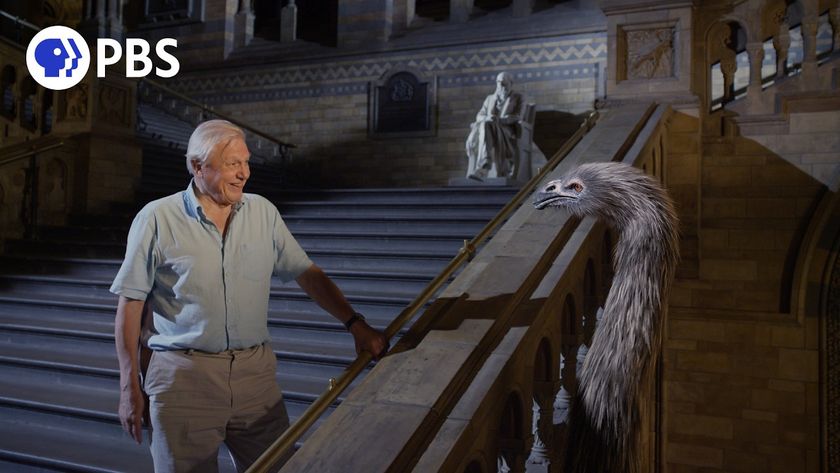For Goodness' Sake? Santa Delivers for Both Naughty and Nice Kids, Study Finds

It turns out that it's not whether kids are naughty or nice that determines if Santa pays them a visit on Christmas. Nor is it the distance that Santa needs to travel from the North Pole.
Rather, socioeconomic factors appear to make the difference when Santa Claus plans his Christmas route, a new study from the United Kingdom finds.
In the study, published Dec. 14 in the annual Christmas issue of the BMJ, which is a tongue-in-cheek edition of the medical journal that normally publishes serious research, the researchers wanted to figure out why Santa visited some of the children's wards of hospitals in the United Kingdom, but not others. [11 Health Benefits of Christmas Dinner]
Lead study author, Dr. John Park, a Kennedy scholar at the Harvard University T. H. Chan School of Public Health, spent a night in the hospital one Christmas when he was a child. Around midnight, a man dressed up as Santa handed out presents to the kids. Park later presumed this was one of the doctors.
"The present he gave was one of the best presents I ever received: a huge Lego set," Park told Live Science. "It was a truly wonderful experience to be taken care of so well, in spite of being so sick, so much so that I even remember it now. I had always wondered whether all hospitals had the same experience, or whether different regions had it worse [or] better."
In the study, Park and his colleagues focused on 186 children's wards in hospitals in England, Northern Ireland, Scotland and Wales. Santa visits were confirmed by hospital staffers who had been working on Christmas Day, 2015.
Of course, the prevailing explanation for why Santa visits some children and not others is that it depends on if they've been naughty or nice. To calculate the relative "naughtiness" of the children in different hospitals, the researchers looked at the rates of school absenteeism and juvenile conviction rates in the areas near the hospitals.
Sign up for the Live Science daily newsletter now
Get the world’s most fascinating discoveries delivered straight to your inbox.
The researchers also calculated each hospital's distance from the North Pole "as the reindeer flies," the study authors wrote. [6 Surprising Facts About Reindeer]
In addition, the researchers included information on socioeconomic factors in various regions across the United Kingdom.
Results showed that on Christmas 2015, Santa did manage to visit most of the children's wards in hospitals. He was notably efficient in Northern Ireland, where he visited 100 percent of the wards. In Scotland, he made it to 93 percent of the wards, in Wales, 92 percent, and in England, he made it to 89 percent, according to the study.
However, naughtiness, niceness and North Pole distance played no role in Santa's route, the researchers found. Sadly, it was the socioeconomic factors that played a role: The odds of Santa skipping a hospital were 31 percent higher in poorer areas in England specifically, the researchers found.
"We had thought that there might be some variation by region and by countries in the U.K., but we did not expect there to be such a significant difference by socioeconomic deprivation," Park said.
"Santa's commitment to bringing presents to children across the world in a 24-hour period is legendary," senior study author Jarvis Chen, a research scientist in social and behavioral sciences also at Harvard University, said in a statement. "But our study shows that socioeconomic deprivation presents structural barriers to cheer that challenge even Santa's preternatural abilities. This speaks to the continued need for policies and interventions to address socioeconomic deprivation and inequities in the U.K. and worldwide."
But the children in poorer areas weren't deprived of all Christmas cheer: The diligent staffers who staked out the wards on Christmas for Santa sightings also spotted other special visitors, including elves, Elsa from the movie "Frozen" and professional athletes who had come to spread Christmas cheer.
"What also surprised us was the number of ordinary superheroes, [such as] footballers, rugby players and even Elsa, coming to visit the kids over Christmas, bringing festive cheer," Park said. "We really salute the volunteers who work hard during this time period in hospitals to keep spirits up across the country."
As for the conclusion that naughtiness doesn't play a role? "Normally we would hope our research reaches the widest possible audience. But on this occasion, we call for caution in discussing the results, especially in front of children, for the sake of worried parents worldwide," Park said in a statement.
Originally published on Live Science.




